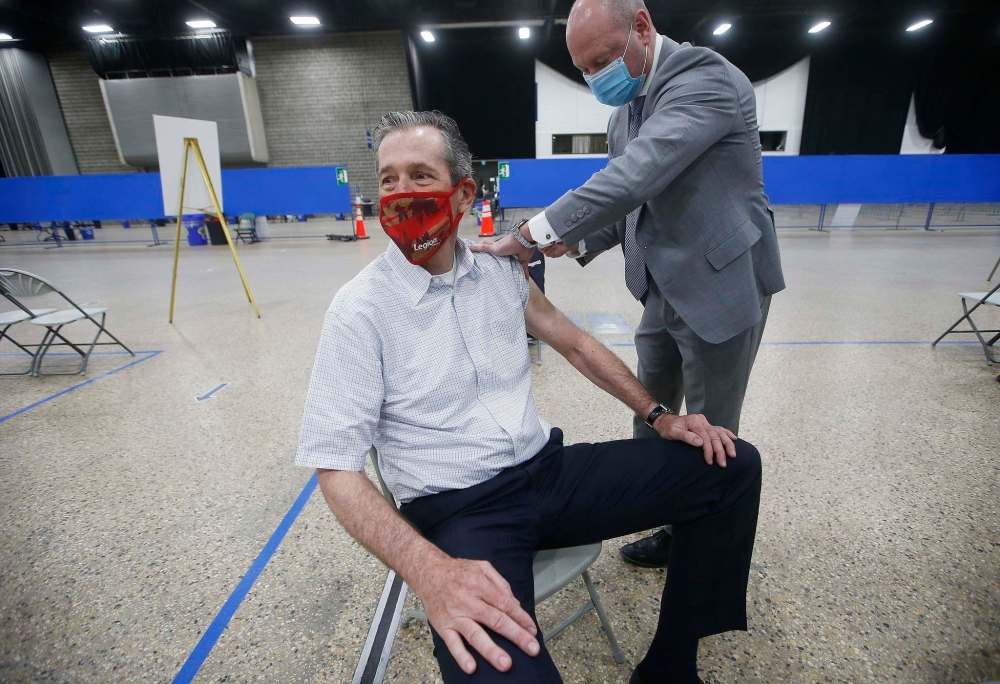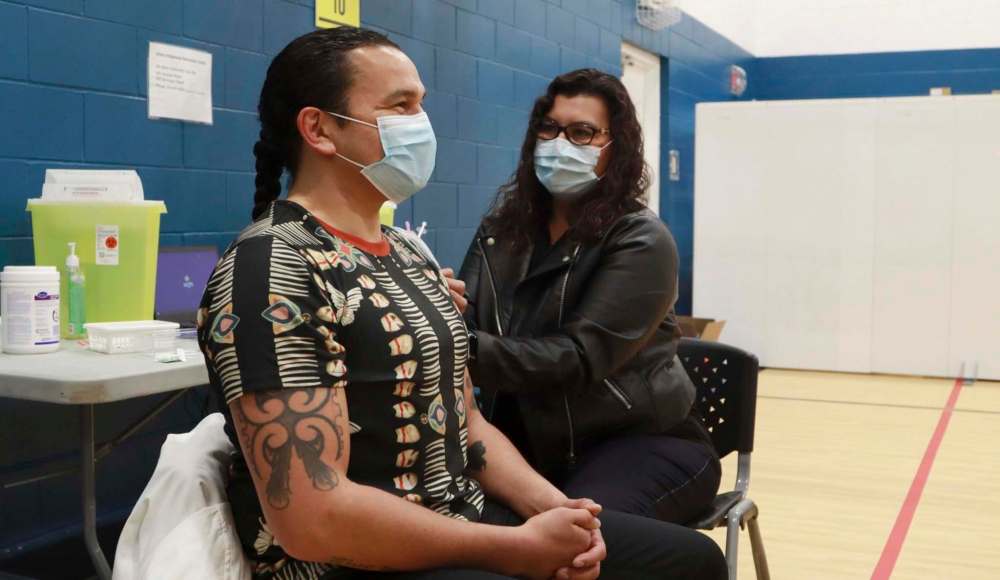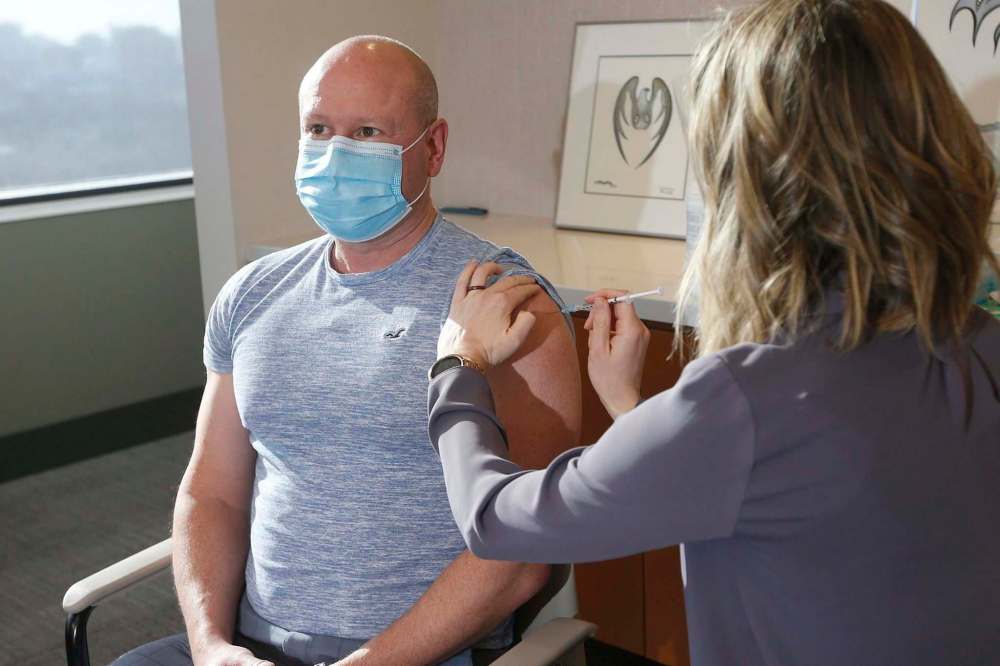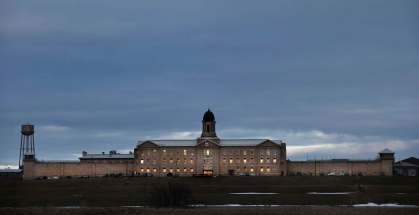Images of people getting vaccine shots ‘scaring people’: Pallister
Read this article for free:
or
Already have an account? Log in here »
To continue reading, please subscribe:
Monthly Digital Subscription
$0 for the first 4 weeks*
- Enjoy unlimited reading on winnipegfreepress.com
- Read the E-Edition, our digital replica newspaper
- Access News Break, our award-winning app
- Play interactive puzzles
*No charge for 4 weeks then price increases to the regular rate of $19.00 plus GST every four weeks. Offer available to new and qualified returning subscribers only. Cancel any time.
Monthly Digital Subscription
$4.75/week*
- Enjoy unlimited reading on winnipegfreepress.com
- Read the E-Edition, our digital replica newspaper
- Access News Break, our award-winning app
- Play interactive puzzles
*Billed as $19 plus GST every four weeks. Cancel any time.
To continue reading, please subscribe:
Add Free Press access to your Brandon Sun subscription for only an additional
$1 for the first 4 weeks*
*Your next subscription payment will increase by $1.00 and you will be charged $16.99 plus GST for four weeks. After four weeks, your payment will increase to $23.99 plus GST every four weeks.
Read unlimited articles for free today:
or
Already have an account? Log in here »
Hey there, time traveller!
This article was published 29/04/2021 (1684 days ago), so information in it may no longer be current.
Premier Brian Pallister says images of needles going into arms shown repeatedly on TV may be contributing to vaccine hesitancy in Manitoba.
Asked Thursday why he thinks reported inoculation rates are low in parts of southeastern Manitoba, the premier said the provincial government is promoting the need for people to get vaccinated.
“That’s why we’ve communicated though advertising, through written materials” how important that is, Pallister said during a news conference.
However, he added, one thing that might combat vaccine hesitancy would be for media to stop broadcasting shots of people getting shots.

“I’ll be blunt. Basically, every night now when I have the opportunity to watch a TV broadcast, I see a needle going into somebody’s arm. If you’d like to stop scaring people, stop showing the needle going into everybody’s arm and the blood coming out. It doesn’t really help,” Pallister said.
“Maybe if we could just talk about the importance of vaccines rather than showing the needle going into somebody’s arm, we might do a little better on convincing some people to get the vaccine.”
On April 8, the premier got his first shot of the Pfizer-BioNTech vaccine during a media event at the downtown Winnipeg convention centre. Video and still images of the moment the needle, wielded by chief provincial public health officer Dr. Brent Roussin, plunged into the premier’s left arm were among the day’s top local news.

On Thursday, NDP Leader Wab Kinew disagreed with Pallister’s stance, saying people need to see graphic images of the the vaccine being administered.
“I think it’s important that we show the actual needle going into the arm to combat conspiracy theories that are out there,” Kinew said in a scrum with reporters.
“One of the ones that I’ve seen circulating is that when you see politicians or celebrities or influencers getting the shot and you don’t actually see the needle going in, then it’s a conspiracy — they’re not actually getting it,” said Kinew.
“At this point, (we should do) anything we can do to counter misinformation.”

Kinew received a COVID-19 vaccine dose Thursday, and invited media to attend.
“I have a lot of trust in media types who’ve been programming television news for many years over their entire careers,” said Kinew, a former broadcast journalist. “I think they’ll get it right.”
The NDP leader said he felt “elated” after receiving his first COVID-19 vaccine dose.
“For me, it made it seem as though the end of the pandemic is a little bit closer,” he said. “This is how it ends — this is how we end it — by getting the vaccine.”
carol.sanders@freepress.mb.ca
larry.kusch@freepress.mb.ca


Carol Sanders
Legislature reporter
Carol Sanders is a reporter at the Free Press legislature bureau. The former general assignment reporter and copy editor joined the paper in 1997. Read more about Carol.
Every piece of reporting Carol produces is reviewed by an editing team before it is posted online or published in print — part of the Free Press‘s tradition, since 1872, of producing reliable independent journalism. Read more about Free Press’s history and mandate, and learn how our newsroom operates.
Our newsroom depends on a growing audience of readers to power our journalism. If you are not a paid reader, please consider becoming a subscriber.
Our newsroom depends on its audience of readers to power our journalism. Thank you for your support.








